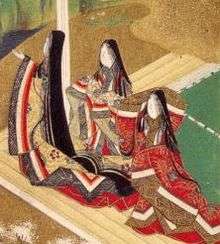Hachimaki


A hachimaki (鉢巻, "helmet-scarf") is a stylized headband (bandana) in Japanese culture, usually made of red or white cloth, worn as a symbol of perseverance, effort, and/or courage by the wearer. These are worn on many occasions, for example, by sports spectators, by women giving birth, students in cram school, office workers,[1] expert tradesmen taking pride in their work, bōsōzoku (teen biker gangs) and even rioters.
Description
These narrow strips of fabric are generally decorated with inspirational slogans, like "日本一" (Nippon Ichi, "the best of Japan" or "Japan is the best") or "必勝" (Hisshō, "absolute victory"), but most typically with the rising sun motif.
History
The historical origin of hachimaki is uncertain. One theory links the cloth to those worn by early religious ascetics. Another theory states that they originated in headbands worn by samurai that kept their helmets on, to absorb perspiration, and keep hair out of their eyes. This is similar to the purpose of the European cloth arming cap.
Perhaps the most well known usage of the hachimaki was by the kamikaze pilots toward the end of World War II. Kamikaze pilots would frequently don a hachimaki, usually with the kanji "神風" ("Kamikaze"), before flying to their deaths.
See also
References
| Wikimedia Commons has media related to Hachimaki. |
- ↑ "Hachimaki - Japanese Headbands - DuncanSensei Japanese". DuncanSensei Japanese. Retrieved 2016-03-19.
